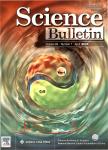Evidence for oxidative damage to prion protein in prion diseases
Evidence for oxidative damage to prion protein in prion diseases作者机构:Institute for Life Science and Health at UCSD La Jolla USA Shanghai JiaoTong University College of Life Science & Biotechnology China Nankai University College of Chemistry China
出 版 物:《Chinese Science Bulletin》 (CHINESE SCIENCE BULLETIN)
年 卷 期:2000年第45卷第17期
页 面:1546-1554页
核心收录:
学科分类:1001[医学-基础医学(可授医学、理学学位)] 100104[医学-病理学与病理生理学] 10[医学]
主 题:prion oxidative damage sequence-specific free radicals variant of Creutzfeldt-Jakob disease (v CJD).
摘 要:In prion diseases the irreversible protein structural transformation process is completed in the brains of mammals within a few months, the uniformly generated infectivity displays extraordinary resistance to inactivation, suggesting that a vital energy source is required for the production of infectious particles. Considering the high oxygen-respiration rate in the brains, prion protein oxidative damage can be the crucial factor. Both theoretical consideration of the nature of protein radical reactions and a large body of previously unraveled feature of scrapie and prion diseases have provided multiple distinct lines of compelling evidence which persuasively support a suggestion that the infectious agents may be prion (free) radicals produced from protein oxidative damage. This paper describes that scrapie prions are most likely formed from prion radicals and oxidative species-mediated sequence-specific cross-linking of benign prion proteins.



